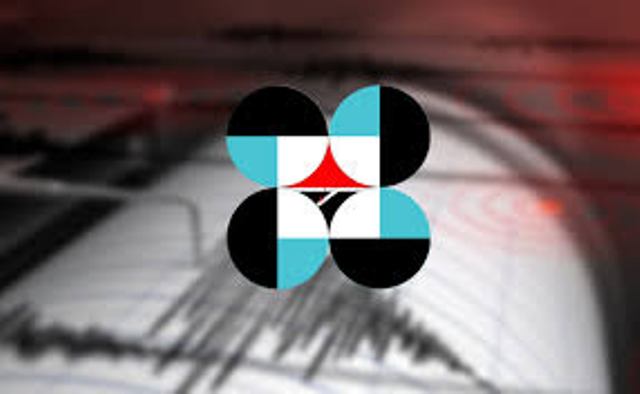6.7-magnitude quake jolts Davao Occidental
Phivolcs sees no tsunami threat but warns of aftershocks
The Philippine Institute of Volcanology and Seismology (Phivolcs) recorded a magnitude 6.7 earthquake that occurred off the coast of southeast Sarangani Island in Davao Occidental early Tuesday morning, Jan. 9.

Initially, Phivolcs recorded a 7.1-magnitude quake which occurred at 4:48 a.m. However, it was updated to magnitude 6.7 in the latest advisory.
Phivolcs said the quake was tectonic in origin with a depth of 94 kilometers.
Aftershocks expected
While Phivolcs noted that no damage is expected, it warned of possible aftershocks.
Based on the reported intensities, the quake was “moderately strong” at Intensity IV in Glan, Malungon, and Kiamba, Sarangani.
Phivolcs said it was also felt as a “weak” tremor at Intensity III in the City of General Santos; City of Koronadal, Tupi, Polomolok, and T'boli, South Cotabato; Alabel, and Malapatan, Sarangani; and Matalam, Cotabato.
Intensity II or “slightly weak” quake was recorded in Tampakan, Tantangan, Banga, Norala, Santo Niño, Surallah, and Lake Sebu, South Cotabato; City of Zamboanga; Maitum, Sarangani; City of Kidapwan, Makilala, M'lang, Pigcawayan, Tulunan, and Kabacan, Cotabato; and President Quirino, Sultan Kudarat.
Phivolcs said the quake was “scarcely perceptible” at Intensity I in the City of Cagayan De Oro; Maasim, Sarangani; Arakan, Cotabato; and Isulan, Sultan Kudarat.
Based on the instrumental intensities, Phivolcs said the quake was recorded at Intensity IV in Malungon, Alabel, Kiamba, and Glan, Sarangani and Intensity III in the City of Koronadal, Tupi, and T'boli, South Cotabato; Malapatan, Sarangani; Nabunturan, Davao De Oro; Don Marcelino, Davao Occidental; City of Digos, Davao Del Sur; City of Gingoog, Misamis Oriental.
It was recorded at Intensity II in Banga, Norala, Lake Sebu, Santo Niño, Tantangan, and Tampakan, South Cotabato; Maitum, and Malungon, Sarangani; Columbio, President Quirino, Lambayong, Lebak, and Esperanza, Sultan Kudarat; City of Davao; Magsaysay, and Matanao, Davao Del Sur; City of Zamboanga; San Fernando, Bukidnon; City of Kidapwan, Cotabato and at Intensity I in Malaybalay, Kadilingan, and Kalilangan, Bukidnon; Banisilan, Carmen, Magpet, and President Roxas, Cotabato; Balingasag, MISAMIS ORIENTAL; Bagumbayan and Isulan, Sultan Kudarat; and City of Bislig, Surigao Del Sur.
Instrumental intensities, Phivolcs said, are the ground shaking intensities measured by intensity meters in and around the epicentral area.
Felt intensities, on the other hand, are ground shaking that people feel and report based on the earthquake intensity scale.
In a message to reporters, Phivolcs explained that geographically, the epicenter of the magnitude 6.7 earthquake was in Indonesia but recorded by the Philippine Seismic Network and felt in southern Mindanao.
“In the said epicentral area, the tectonic setting is complicated as there are two interacting trenches (Halmahera and Sangihe Trenches),” Phivolcs said. The magnitude 6.7 event, it added, was generated by the Sangihe Trench in Indonesia.
No tsunami warning
Despite the strong quake, Phivolcs said there was “no threat” of tsunami expected.
“No destructive tsunami threat exists based on available data,” Phivolcs said in a separate advisory.
“This is for information purposes only and there is no tsunami threat to the Philippines from this earthquake,” it added.
Given this, Phivolcs said no recommended action is required.